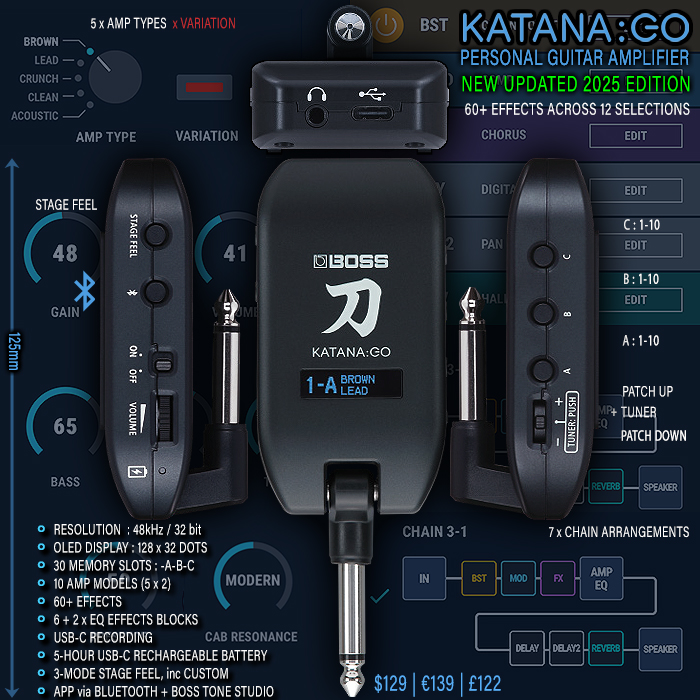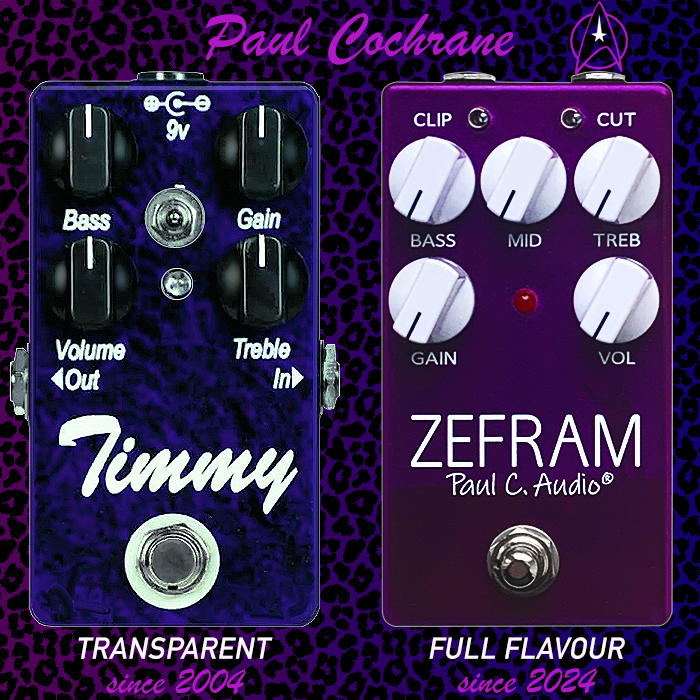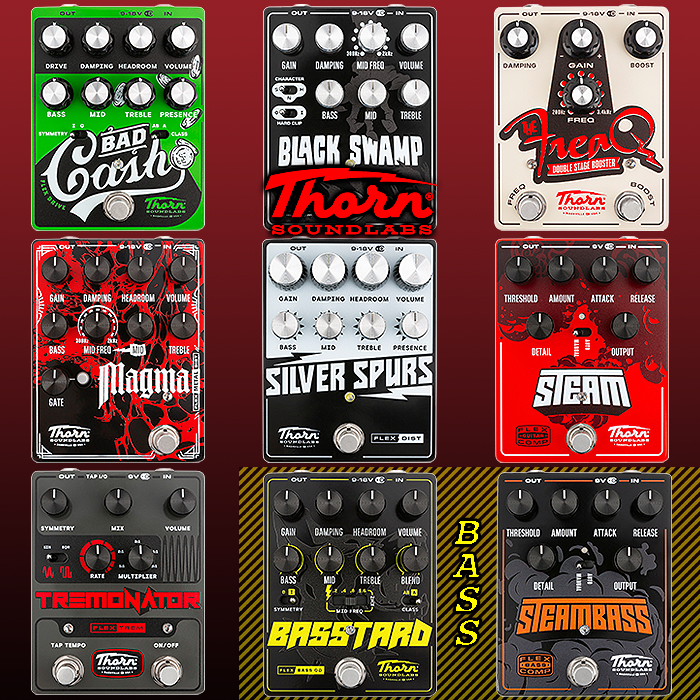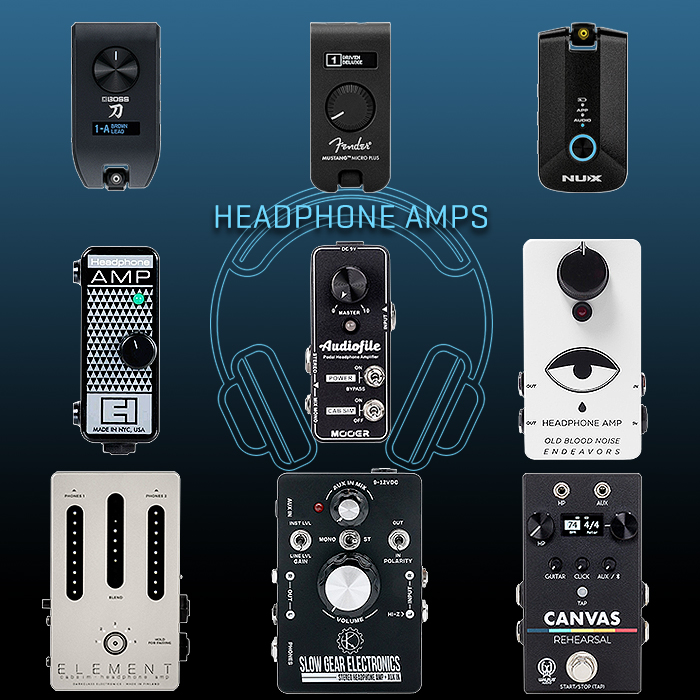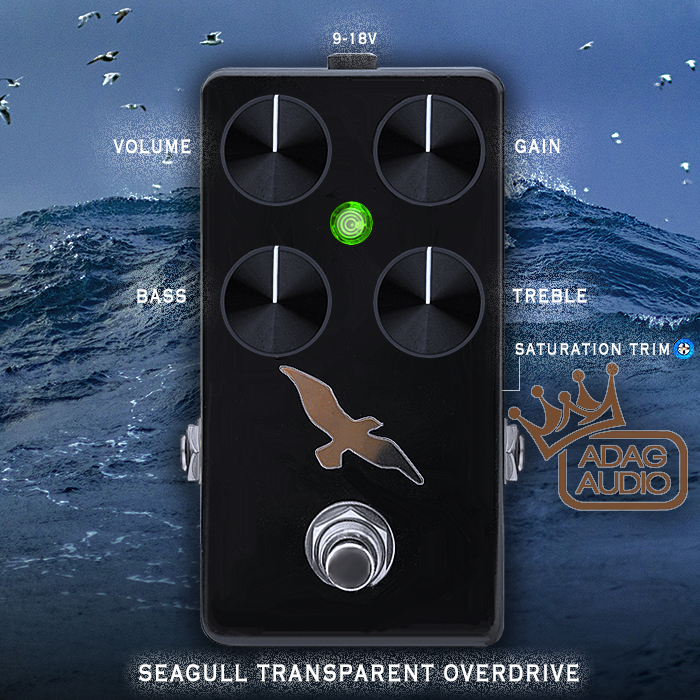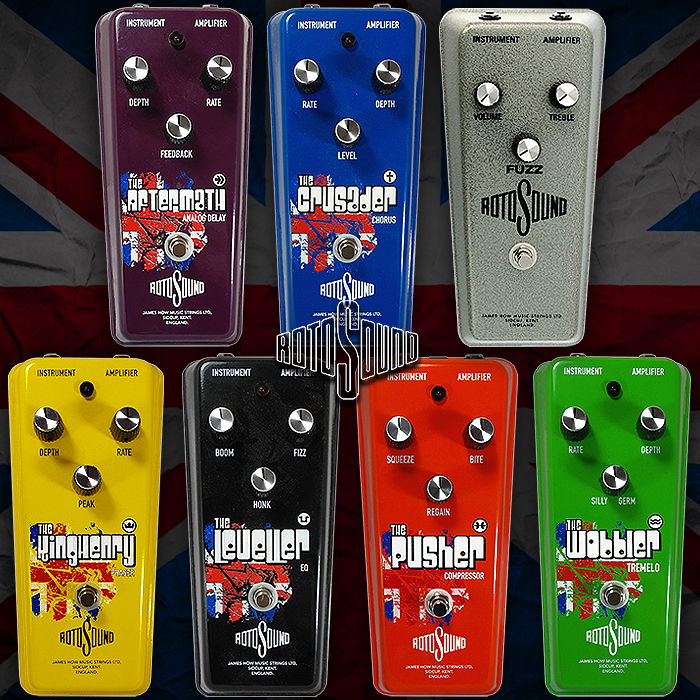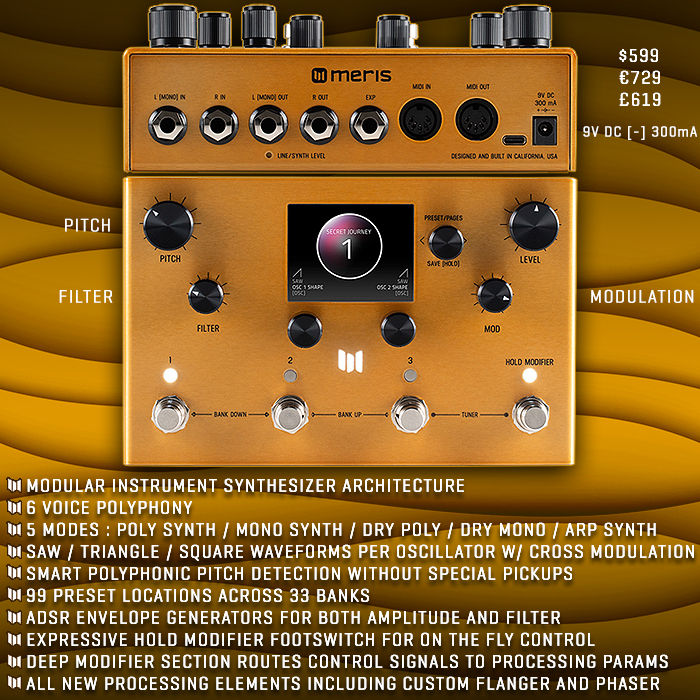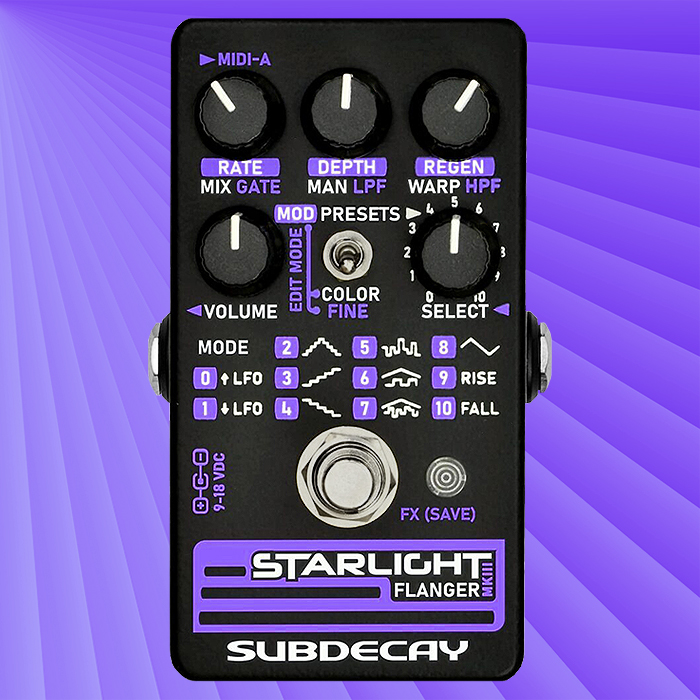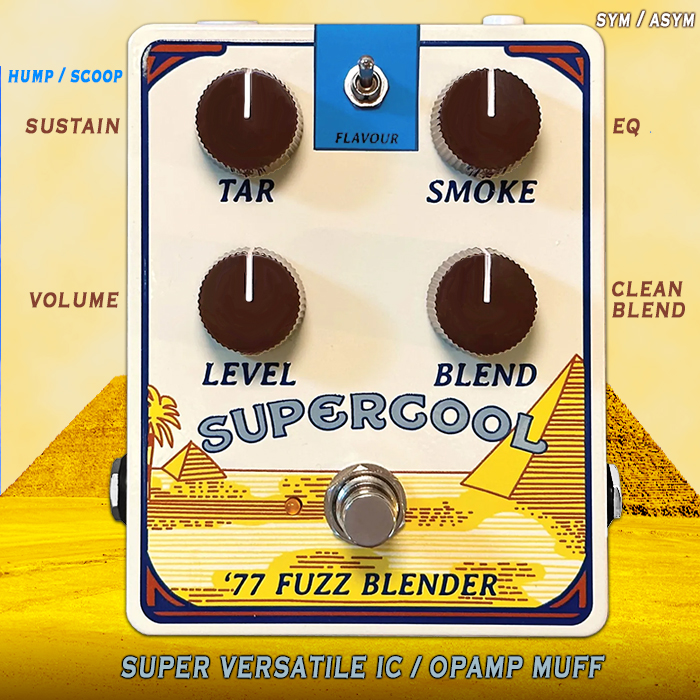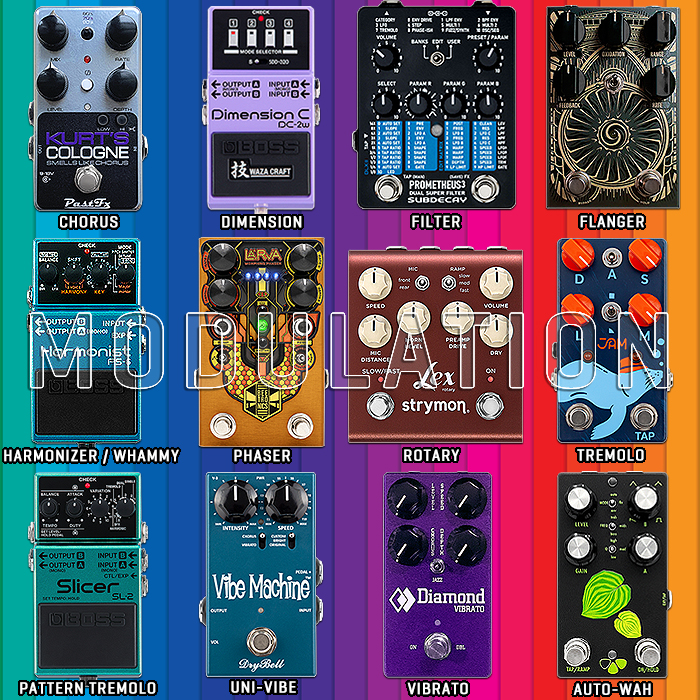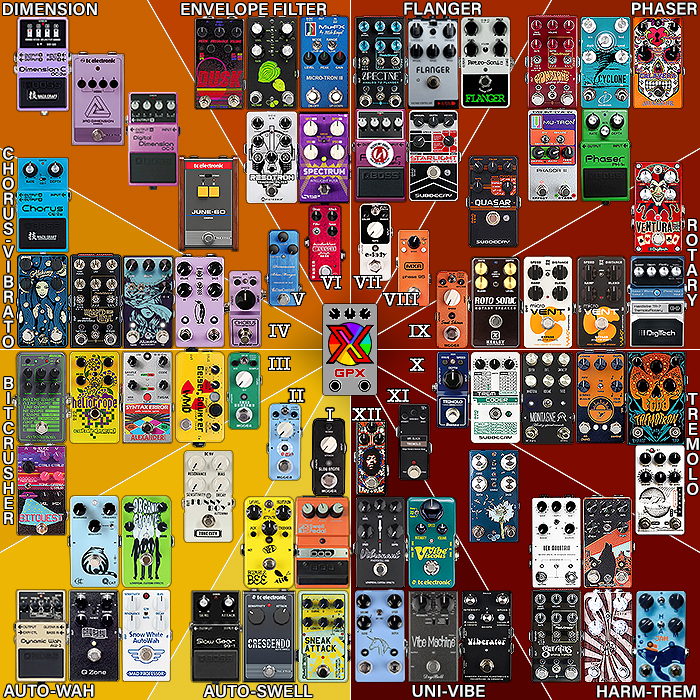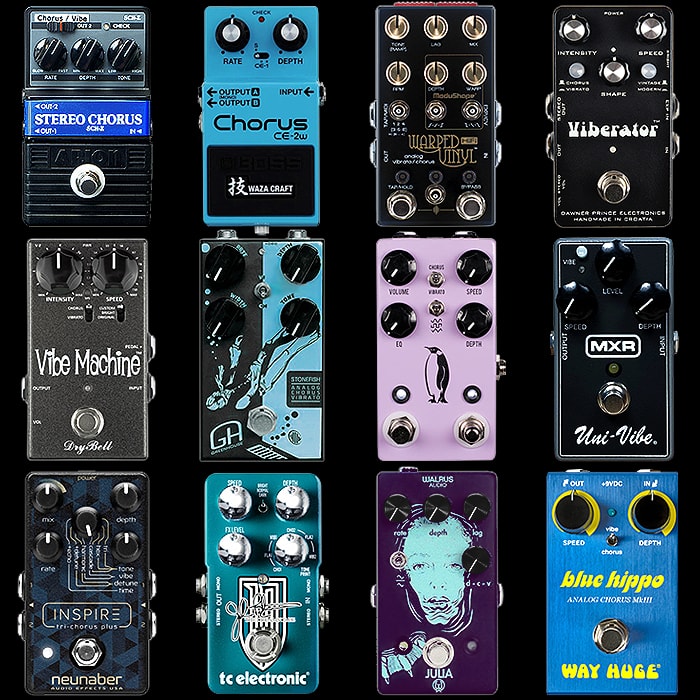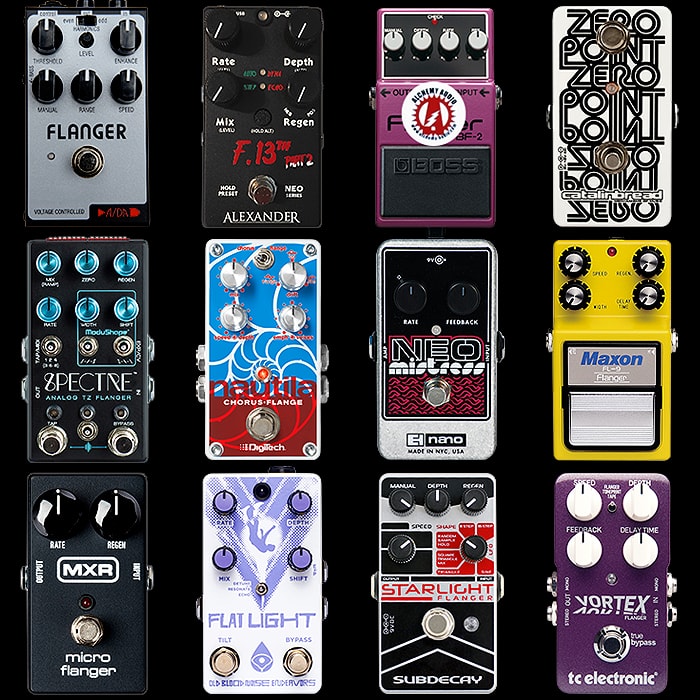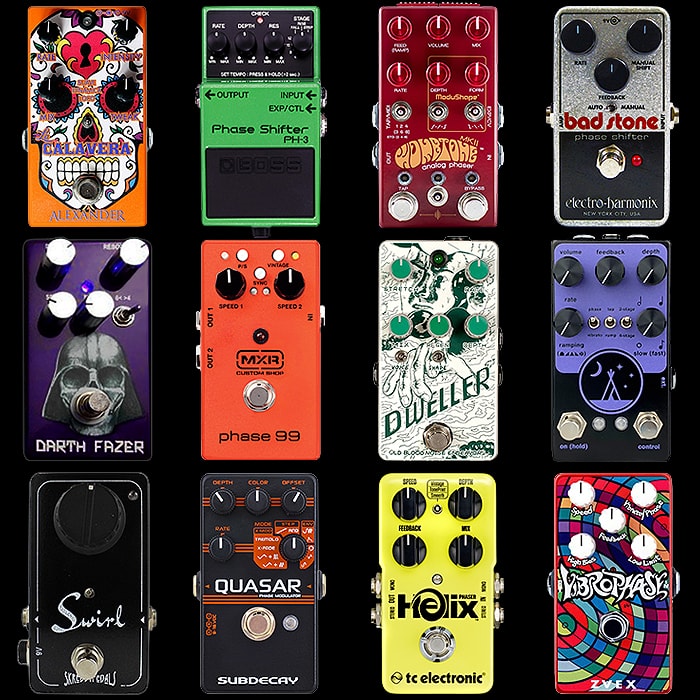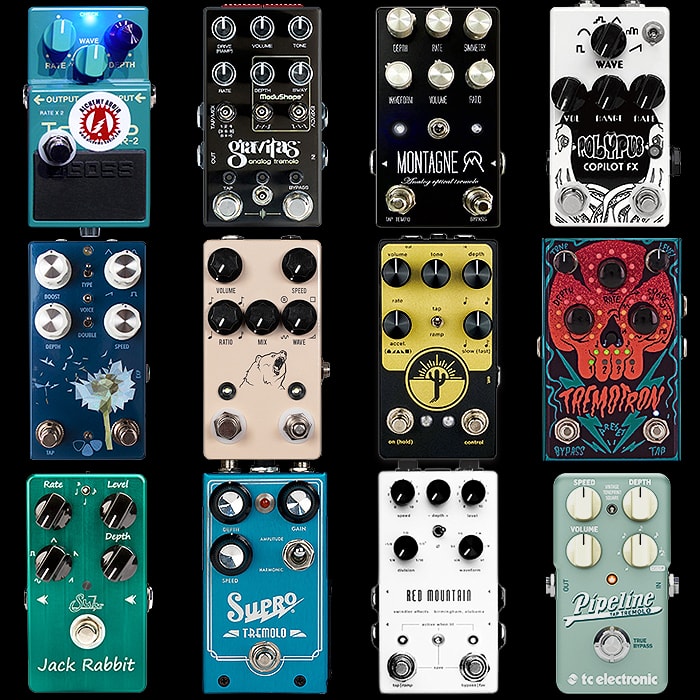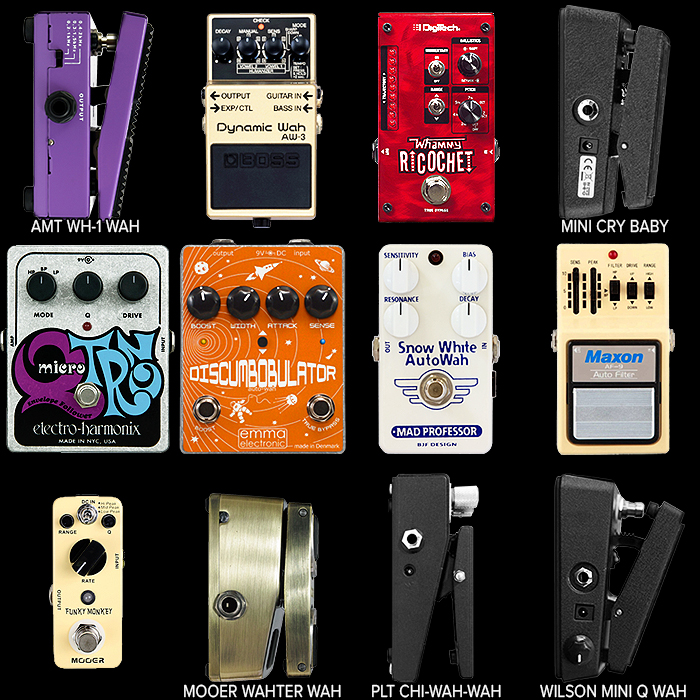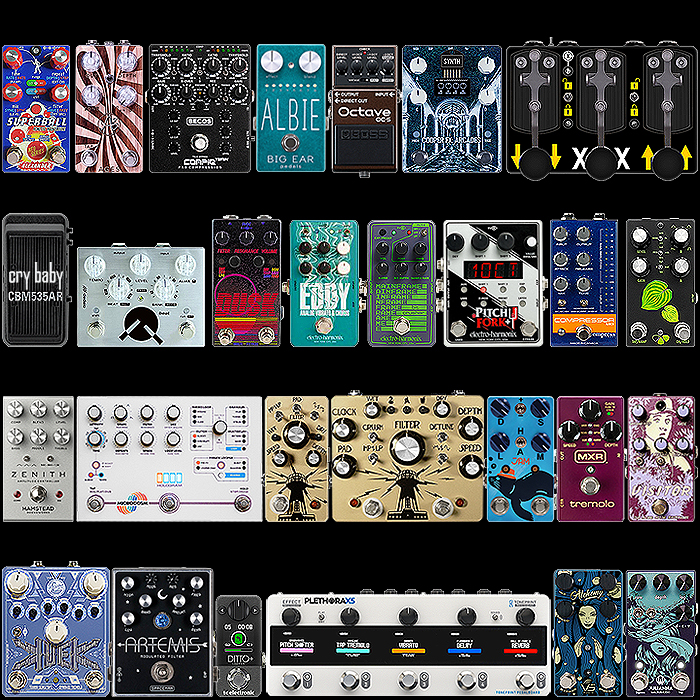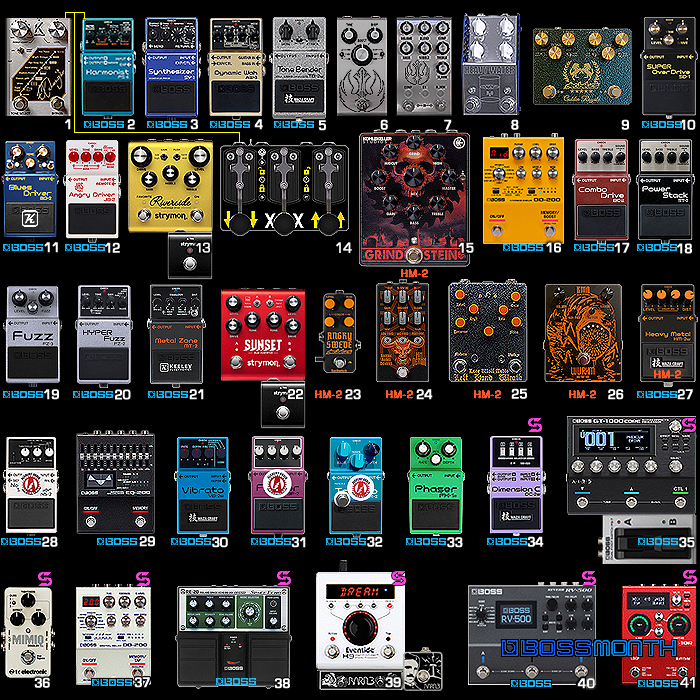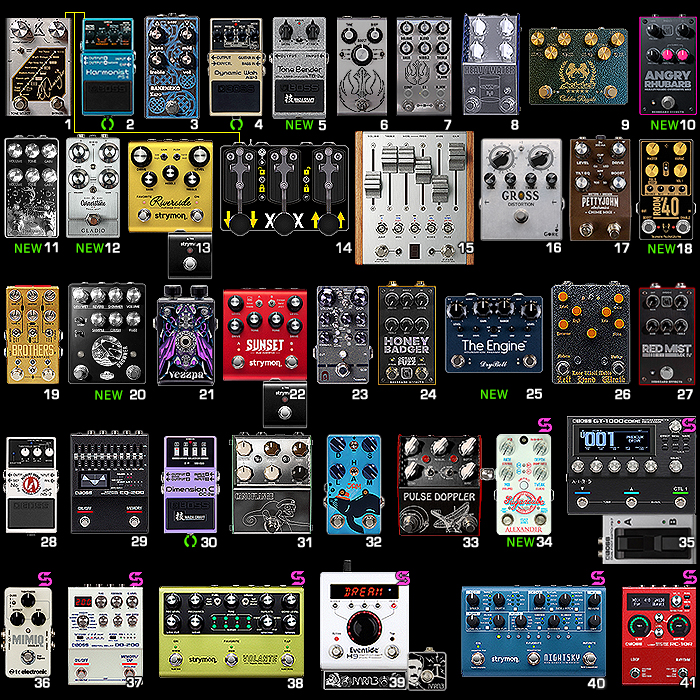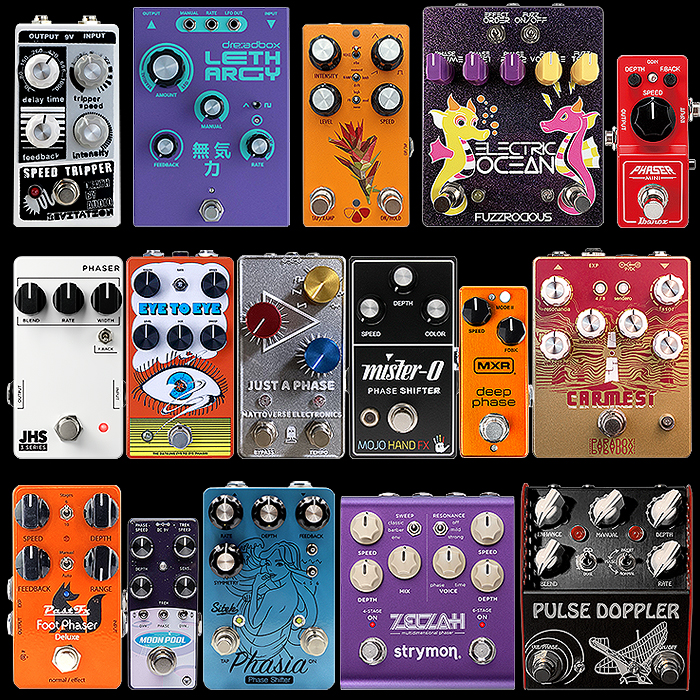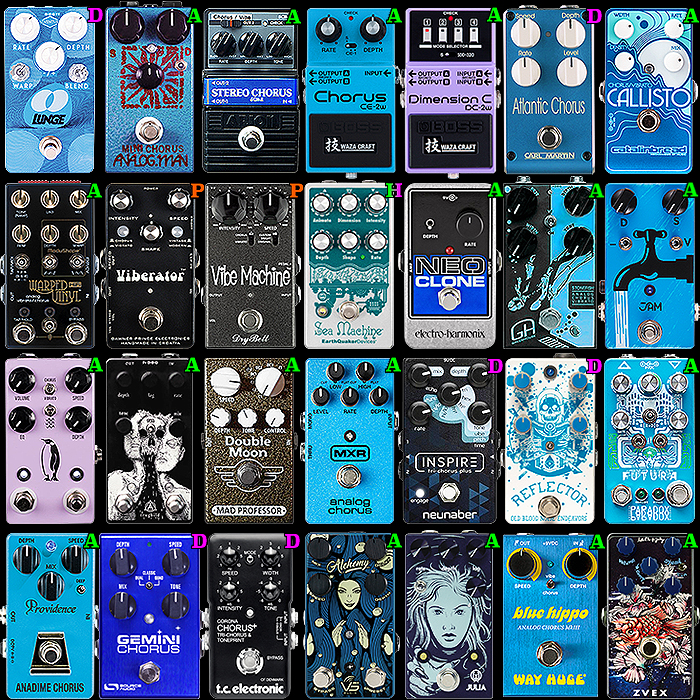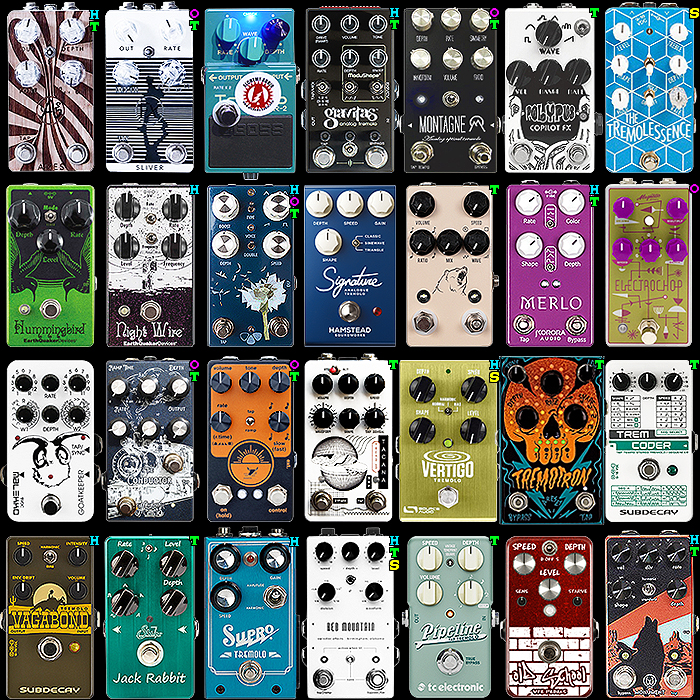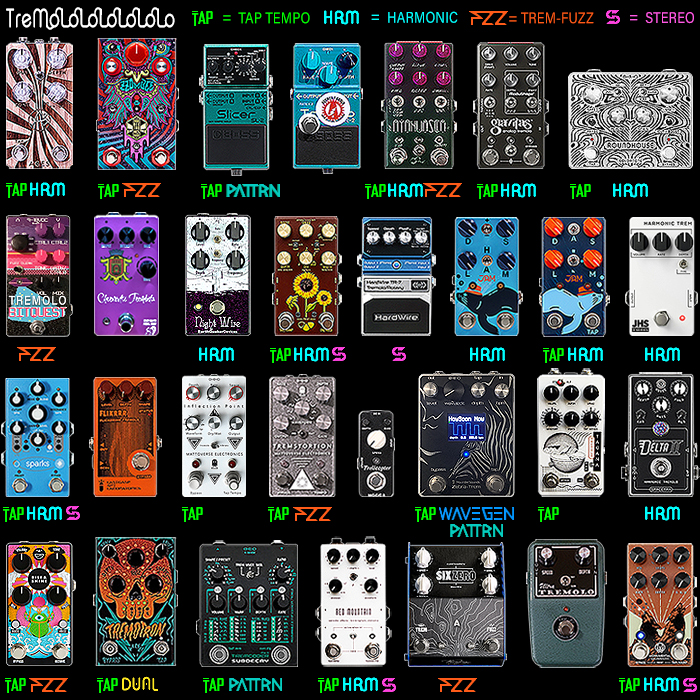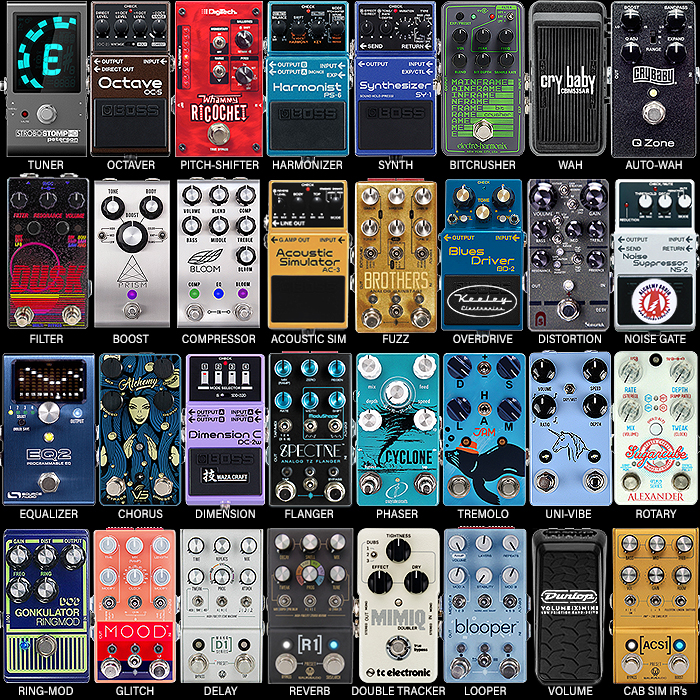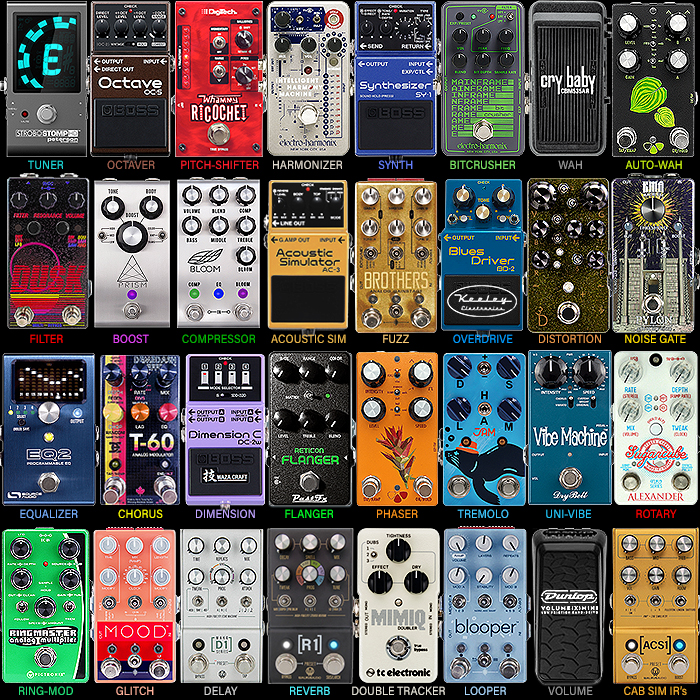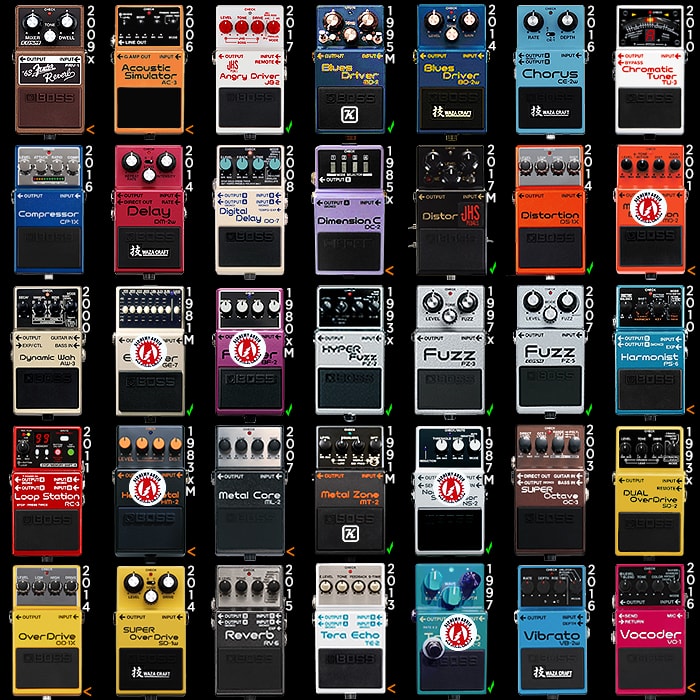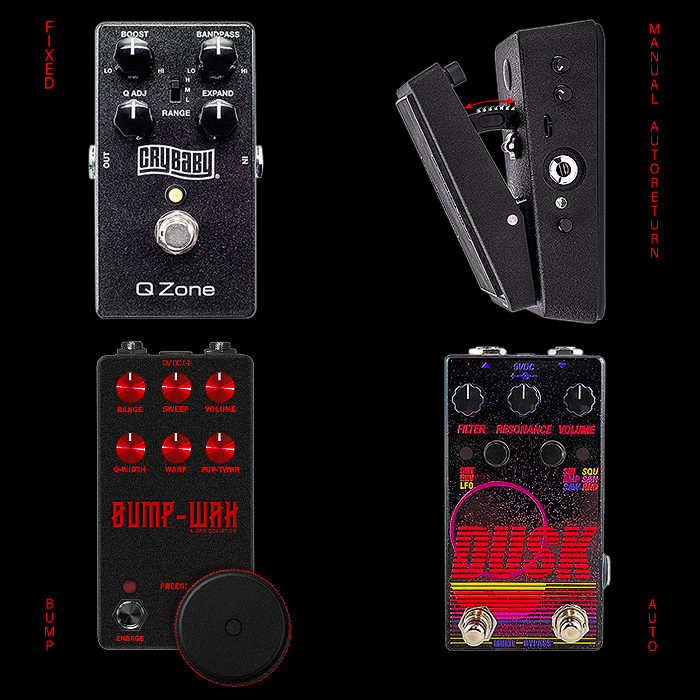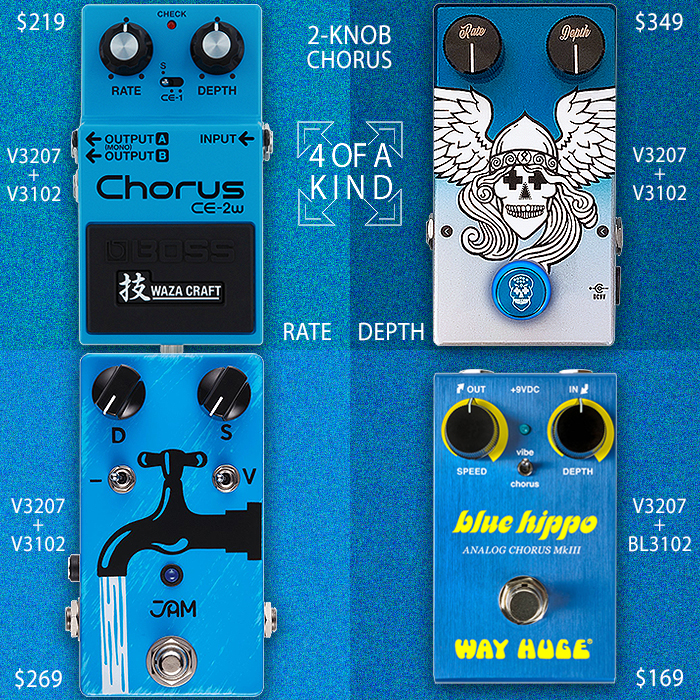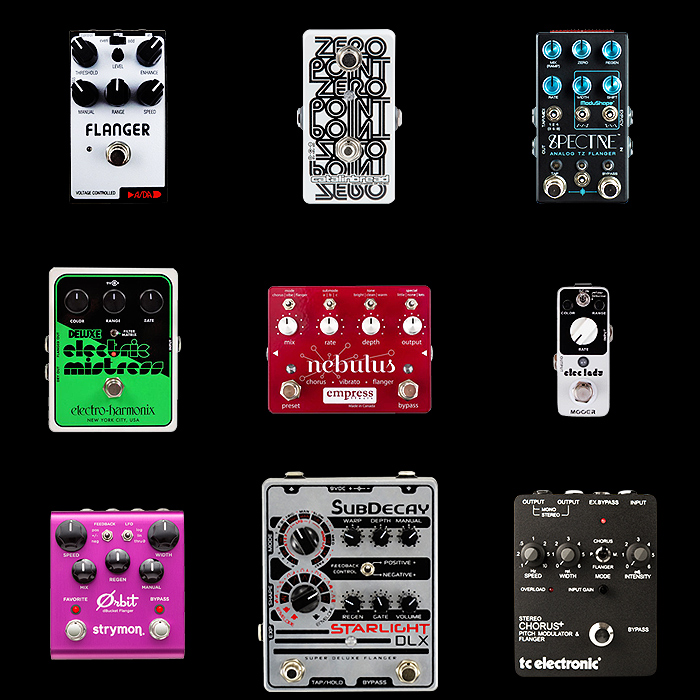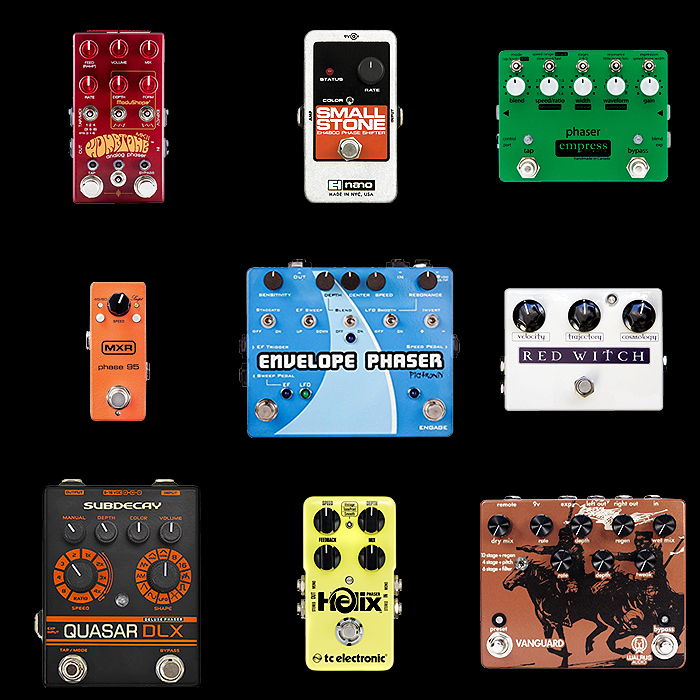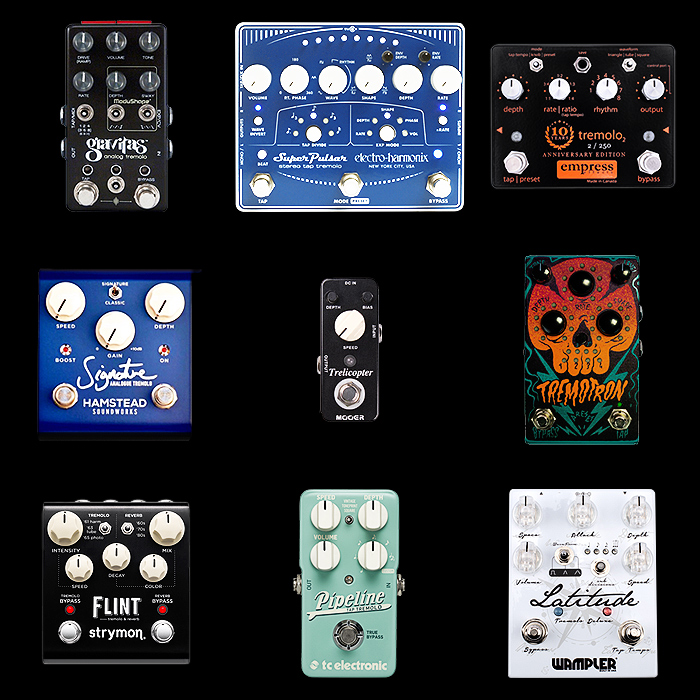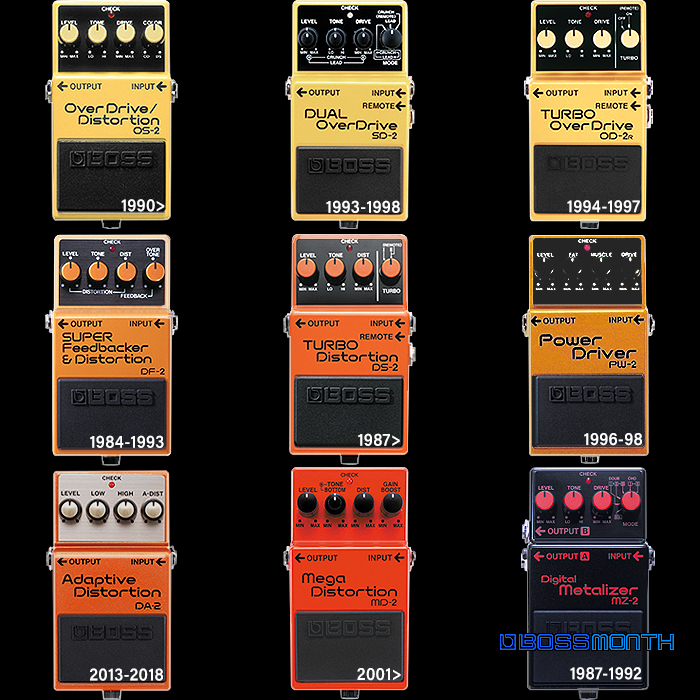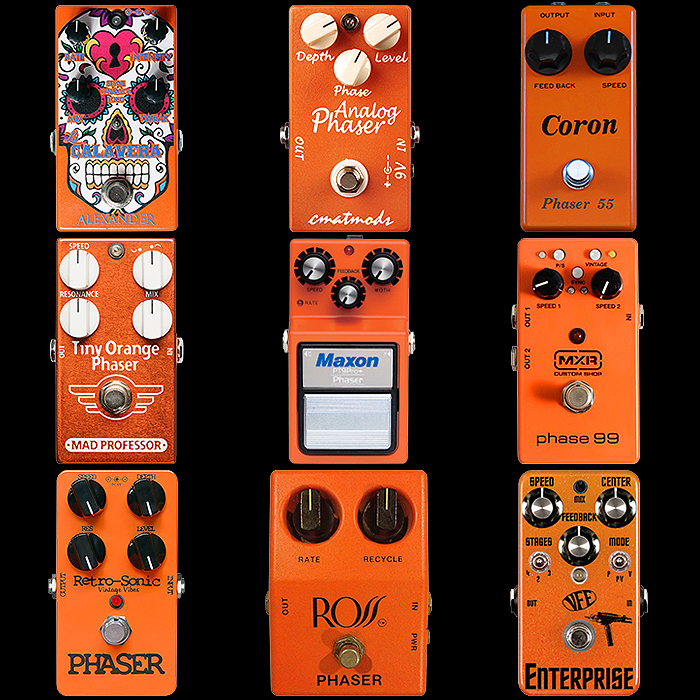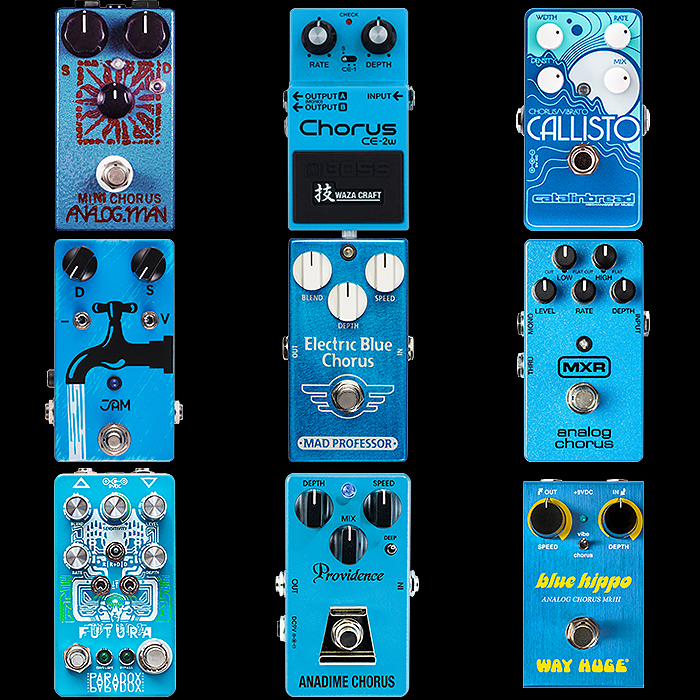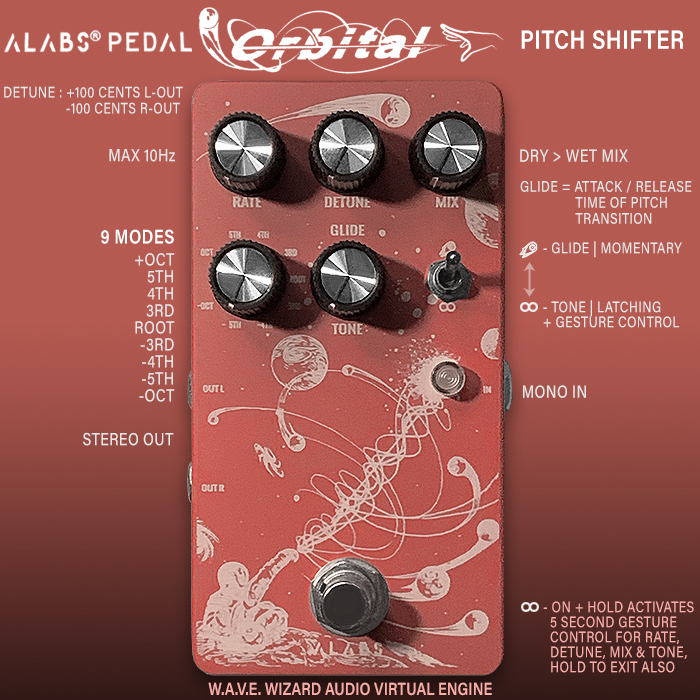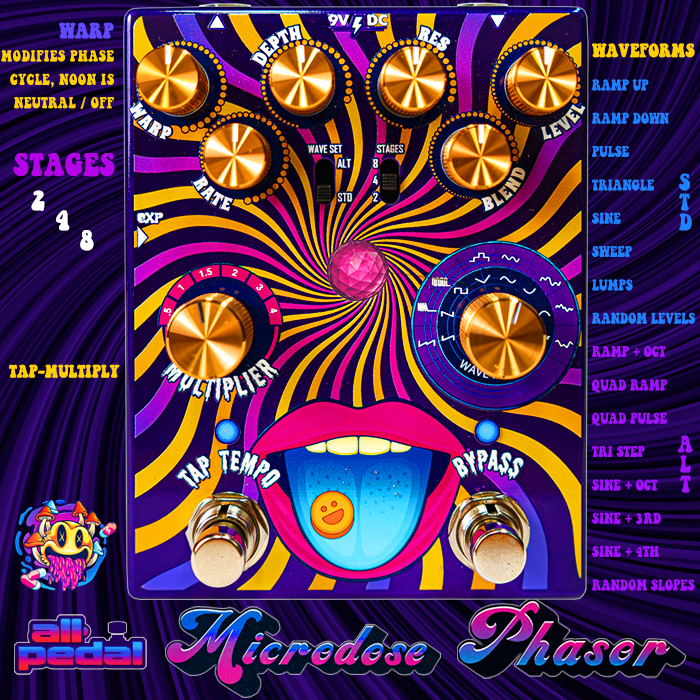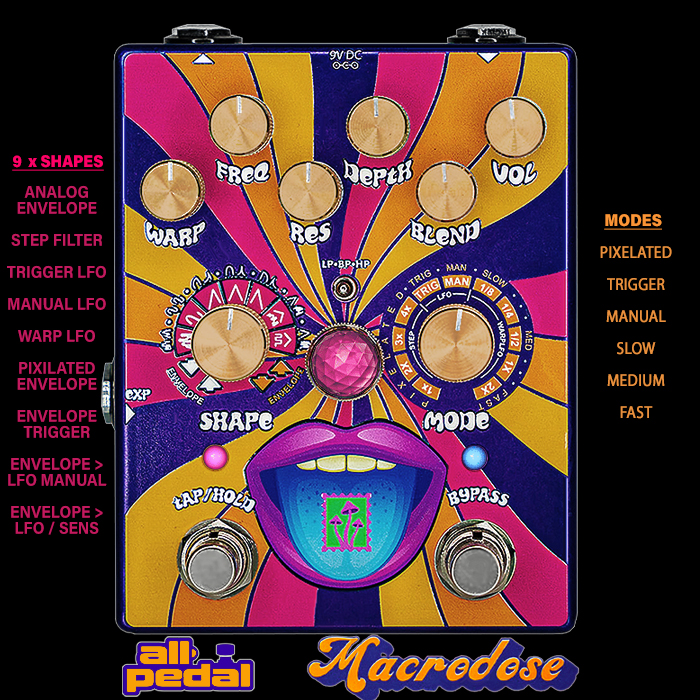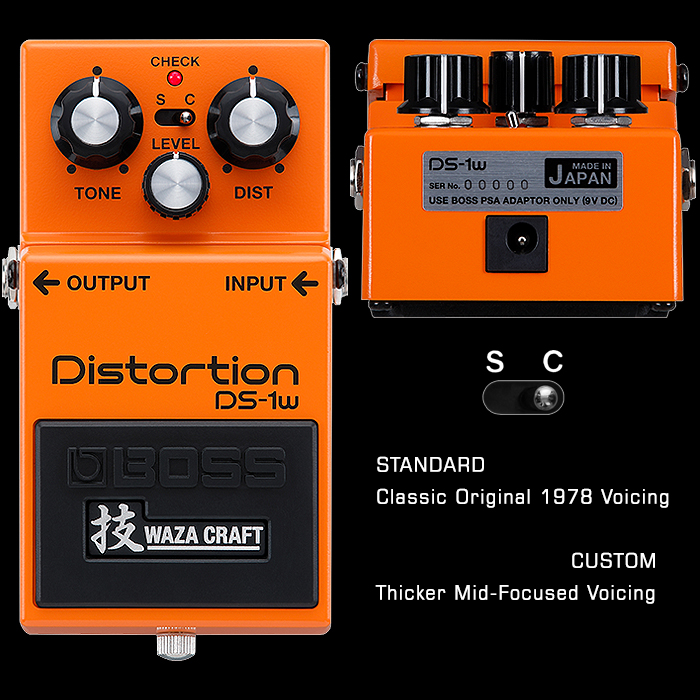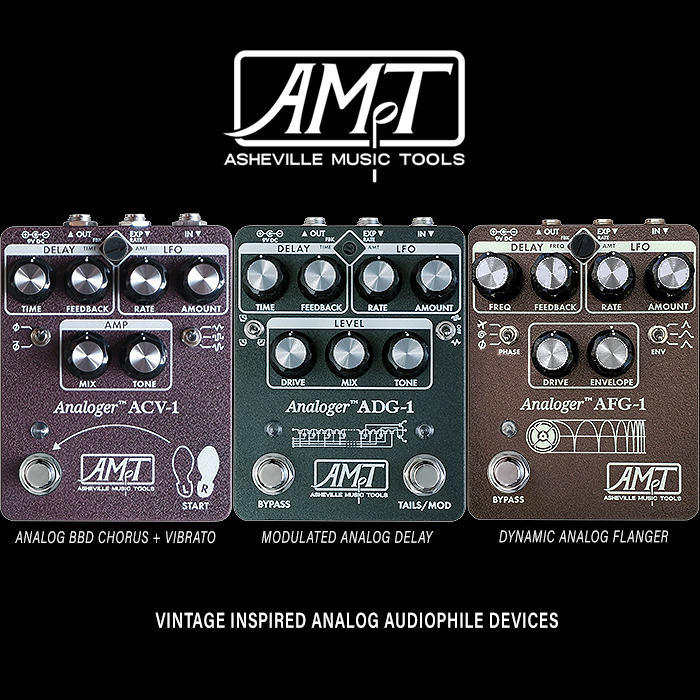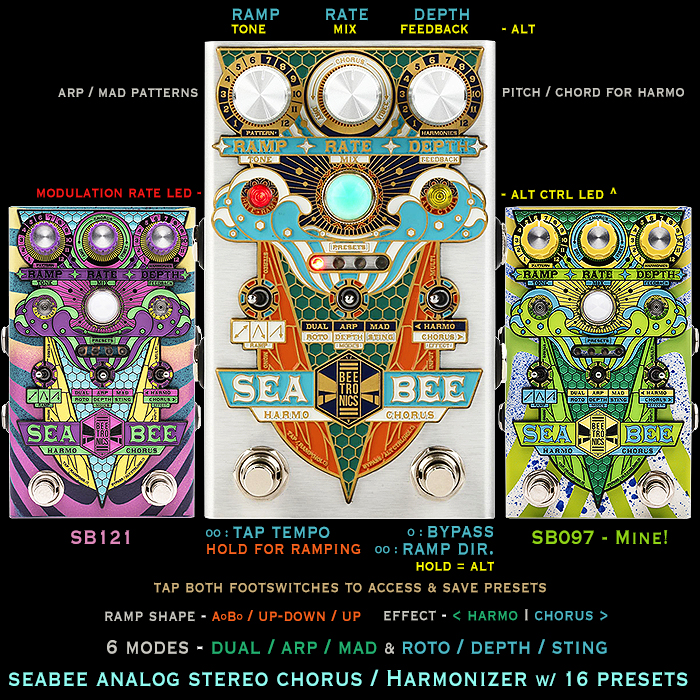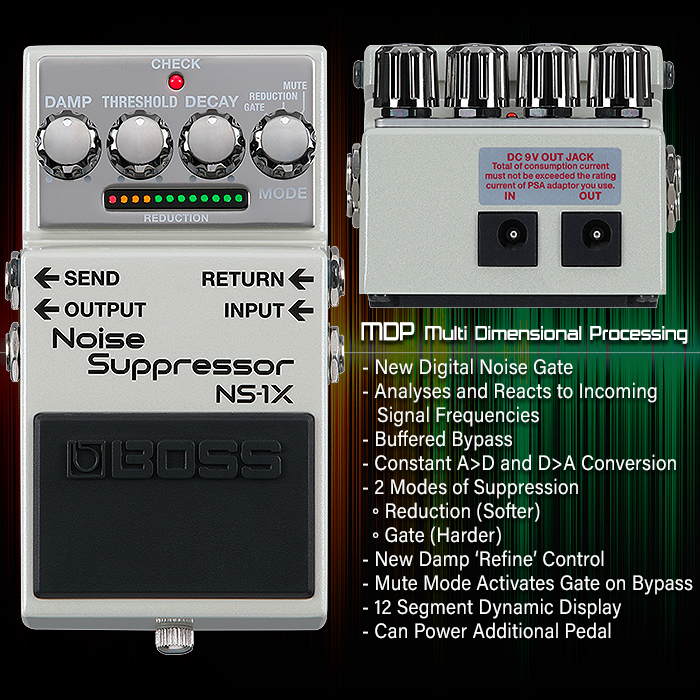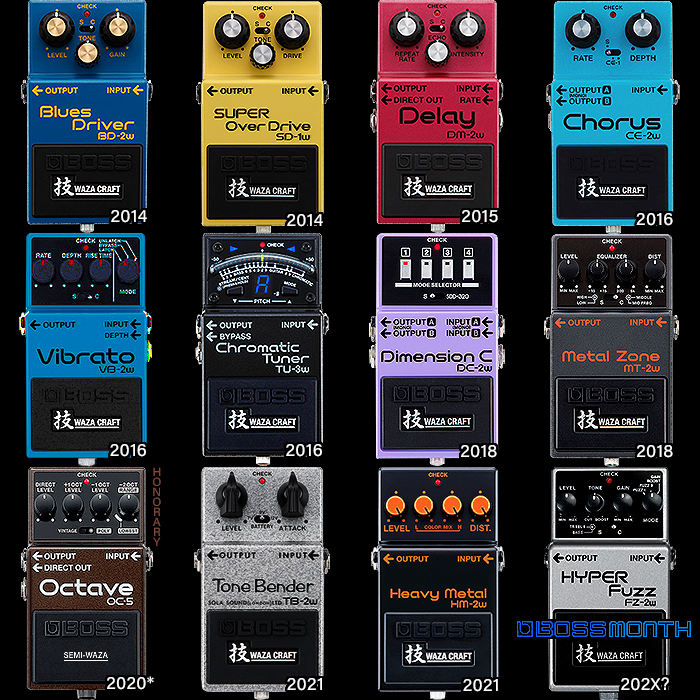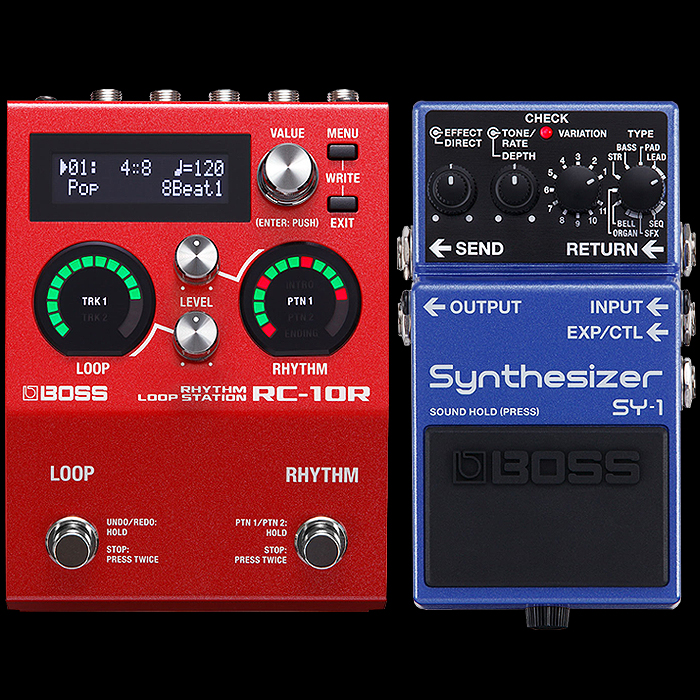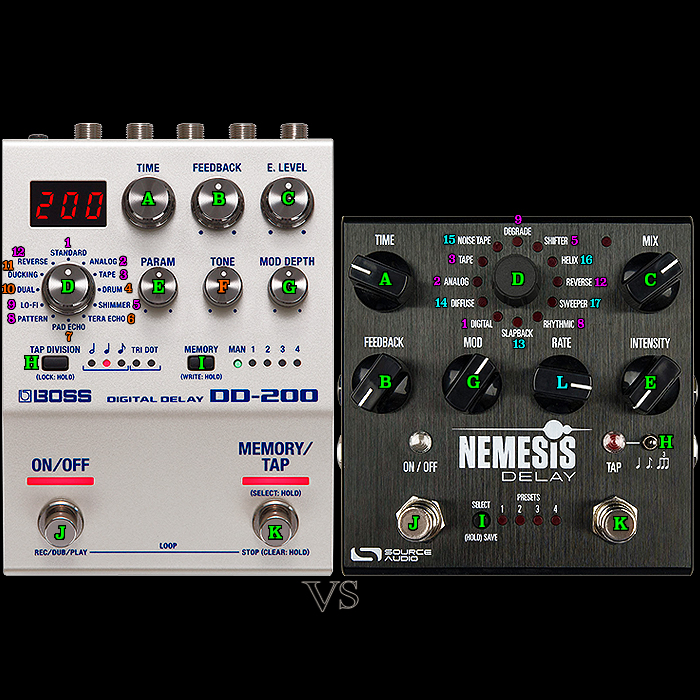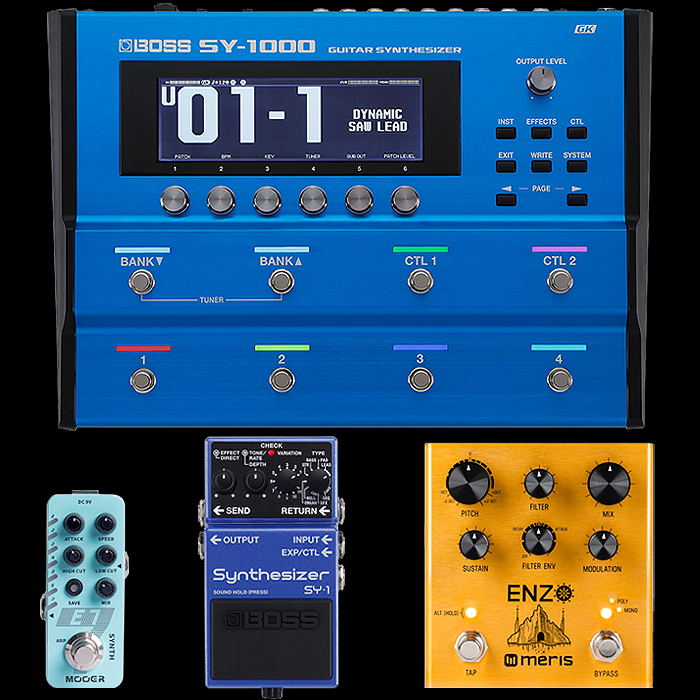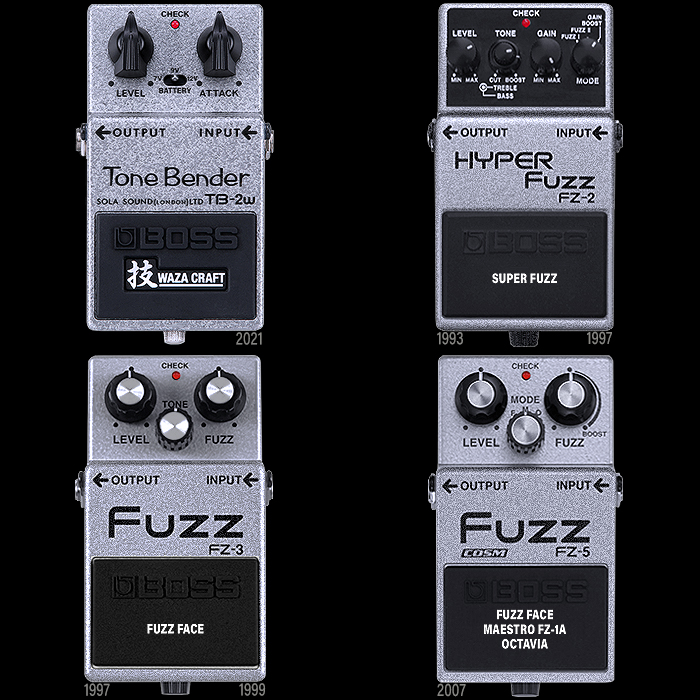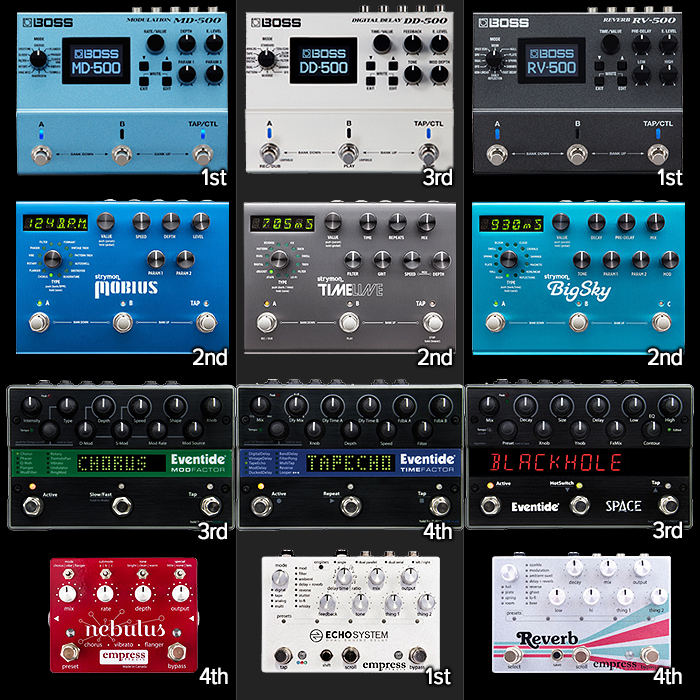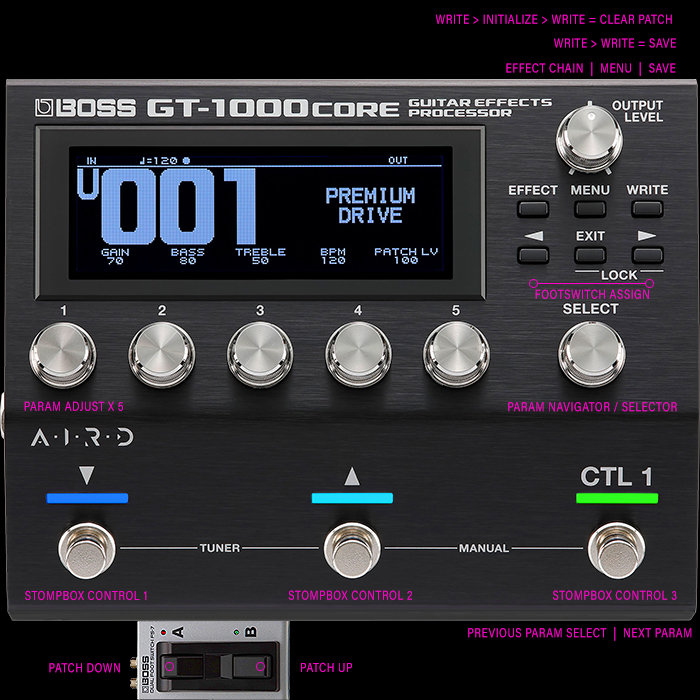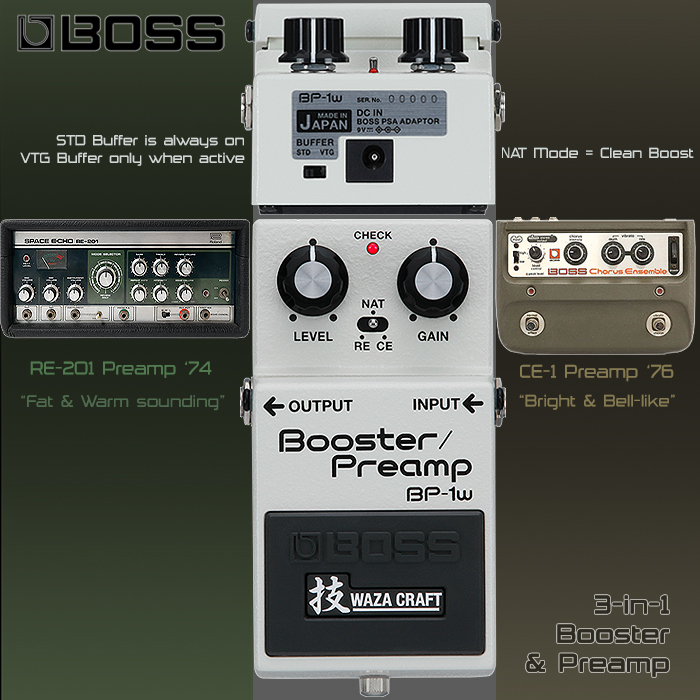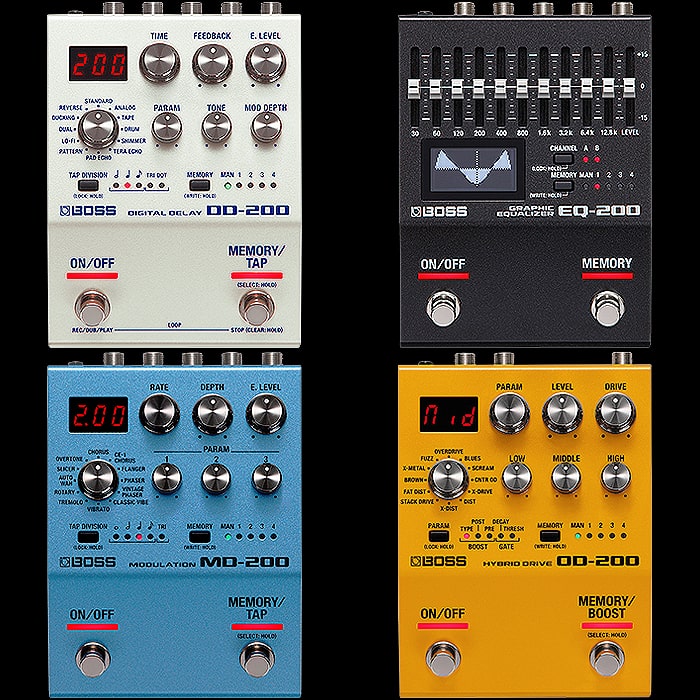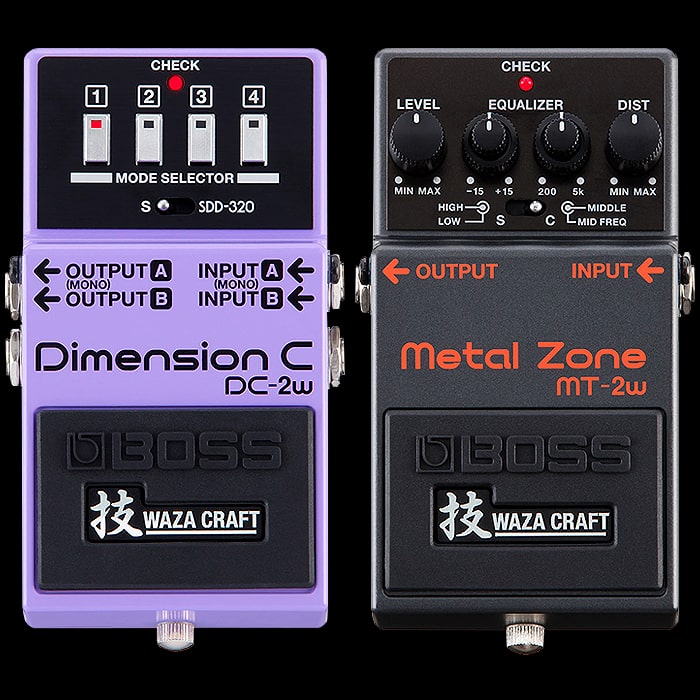12 Essential Compact Edition Boss Modulation Pedals
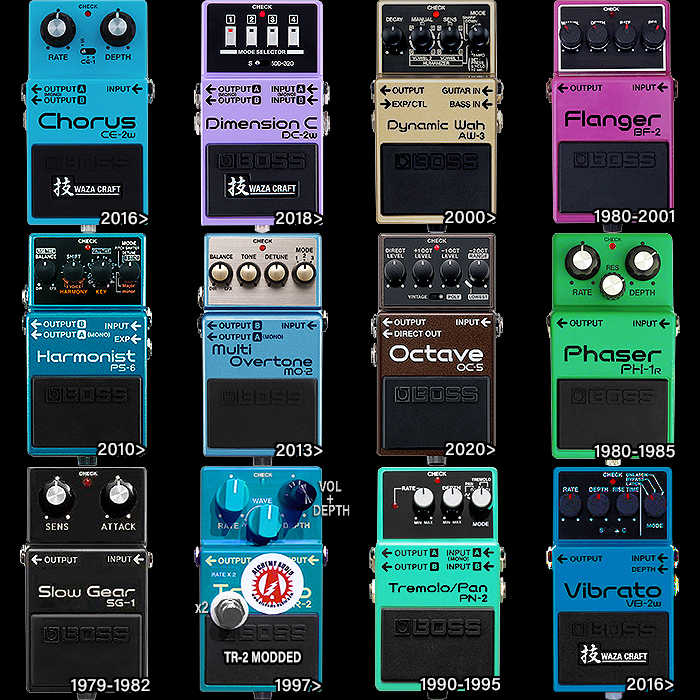
It was about time I turned my attentions towards Boss’s excellent individual Modulations, and which of those I deem perennial classics which appeal to me the most.
Boss’s parent company Roland famously created the Chorus Effect back in 1975 for its then revolutionary solid state JC-120 Jazz Chorus Combo Amp. That same effect was then evolved to become a stand-alone stompbox - first in 1976’s Boss CE-1 Chorus (Chorus Ensemble). Later derivations included the Roland SDD-320 Dimension D Rack Unit (1979) which is a sort of multi-feedback-phase / phasey-chorus - or Spatial/Spectral Enhancer as Boss describes it. Those then evolved into the Boss Compact Edition CE-2 (1979-1992) and DC-2 (1985-1989). Which classic Seriess 2 Compacts were finally revived again as MIJ Waza Craft Editions in 2016 and 2018 respectively.
Another early Boss classic was the BF-1 Flanger (1977), which then evolved into the BF-2 Compact Edition in 1980 (until 2001). Possibly time is ripe for a BF-2 Waza Craft Edition for a return to some old school analog flange flavour.
One of Boss’s original 1977 trio of Compact Editions was of course the PH-1 Phaser, where I prefer the essentially Series 2 PH-1R Edition with additional Resonance control. That is certainly the variety I would revive if it was ever to become a Waza Craft Edition. Possibly that could be done as the Custom option on said Waza edition.
The rather simple and elegant SG-1 Slow Gear Volume Swell from 1979 (until 1982) is another pedal often teased for likely Waza Craft revival, while I feel it’s currently more of the unlikely ones to make the list. Those early editions are being traded for high sums nowadays though.
Next in the sequence is 1982’s VB-2 Vibrato (until 1986), later revived as the VB-2W Waza Craft in 2016. Also the OC-2 Analog Octaver released that year (until 2005) - which was sort of revived as a voicing on last year’s digital OC-5 which has superior tracking and feature set. I feel the OC-5 is overall better for guitarists, while bass players sill seem to mostly prefer the earlier OC-2. The VB-2 and OC-2 were among Prince’s key 80’s peak-time pedals alongside the BF-2 and CE-2 Modulations.
1990 heralded the arrival of actually Boss’s first Tremolo - the PN-2 Stereo Tremolo/Pan (until 1995) which pedal is in quite high demand on the second-hand market currently. Prices seem to be ranging from circa £240 to £400 equivalent on Reverb.com - while I’ve yet to see one which is totally right for my preferences - a lot of those people really don’t know what Excellent and Near Mint Condition entails - in fact the best of those currently available ones seem to be borderline Very Good even and far from the ’Excellent’ condition ascribed! In any case I’m keeping my eye out for one of those at the right price and in proper pristine condition. The PN-2 and SG-1 are the only 2 from this listing that I don’t yet have in the collection.
It’s somewhat surprising that Boss’s first conventional amplitude Tremolo - the TR-2 did not materialise until 1997, and that is the one pedal here that I recommend you acquire in Modded Edition as it really needs that extra Volume Control. I’ve often wondered why Boss haven’t re-issued the TR-2 with a 4th / Volume Control. Judging by the myriad of modded editions out there it is obviously a known weakness / flaw. Analog.Man, JHS and many others have Mods for the TR-2, while I have one from Chicago’s Alchemy Audio (Johny Balmer and Victoria Thiede) featuring a dual-concentric pot with Volume & Depth Controls, while that edition also feature a second x2 Rate Multiplier Footswitch.
The three I have yet to mention - 2000’s, AW-3 Dynamic Wah / Vocal-Wah, 2010s PS-6 Harmonist Pitch-Shifter / Harmonizer, and 2013’s MO-2 Multi Overtone Modulator - are all current editions in the range, and somewhat under-the-radar classics. The AW-3 will be in the rotation very soon in place of the Flower Pedals Hosta Wah-Filter, as will the PS-6 in place of the Meris Hedra. While the MO-2 will be deployed rather more selectively.
These are all what I deem to be the best Editions of each of those Boss effects for my preferences - and as mentioned - I have all of these in the collection bar the SG-1 and PN-2. I’m actively looking to add the PN-2 if I find the right one, while the SG-1’s prices are rather silly for me to be trying to acquire one of those now - in fact I have most undoubtedly left is a little late - but I live in hope of finding either the right specimen, or the possibility that Boss may eventually consent to eevive one or both as Waza Craft Editions.
It’s important to note here the phenomenal legacy of Boss’s Series 2 analog pedals which tend to be the most sought-after variants, and also the ones most likely to be revived as Waza Craft Editions. I count the PH-1R as a Series 2, while the MO-2 is Digital Multi-Dimensional Processing and falls outside that group. The Series 2 Era started with the CE-2 in 1979, where the key period was circa 1980-1990 and which ran concurrent with peak-time Prince, and his use of those pedals. Prince also most famously was the first to run his drums (Linn) through effects pedals - which set the mould for many generations to come.
Here follow more details on each of these with further rationale and usage notes, pedals are ordered alphabetical by pedal name.
[Reference prices where applicable from £ Andertons, $ Sweetwater, € Thomann, and £ Reverb.com] :
CE-2W Chorus Waza Craft Edition (since 2016) - £189 | $206 | €199
Controls - Rate, Depth, Mode : Standard/CE-1 Chorus/CE-1 Vibrato.
This is very obviously an area where Boss still reigns supreme - having been the original creator / originator of the Chorus Effect for parent company Roland's Jazz Chorus Amp (1975), and then of course the stand-alone large-format CE-1 Chorus Ensemble which then became the Compact CE-2 Edition (1979-1992) and latterly revived as a Waza Craft Edition in 2016.
That Pedal Show did about the best coverage of the Boss legacy choruses that you could expect - and I advise everyone to check out that YouTube video (as above). The CE-2W gives you both CE-1 and CE-2 flavours - where the CE-1 renders somewhat brighter - and you have the option of CE-1 Chorus and CE-1 Vibrato - as well as the standard / stock CE-2 voicing.
I still feel that the Boss CE-2 is the benchmark Chorus, and is best in the Waza Craft Edition as pictured - which gives you extended coverage. Perfect for 'Echo Beach', The Cure, Prince and The Smiths 80's tones!
DC-2W Dimension C Spatial/Spectral Enhancer Waza Craft Edition (since 2018) - £199 | $257 | €199
Controls - 4 push buttons of increasing intensity, and where 2 can be selected simultaneously for further nuance, Mode : Standard Dimension C / SDD-320 (Dimension D).
This obviously started with Roland's 1979 SDD-320 Dimension D Rack Unit - which was most famously used on Prince's Purple Rain intro. Boss describes it as a Spatial / Spectral Enhancer - while I prefer to call it a phasey-chorus - where multiple phase-lines are fed back into each other for a bright-accented pristine sort of chorusing effect. As Dan describes it, this has significantly less bottom-end than the CE-2. Which boss describe as sparkling high-fidelity!
I believe the perfect Purple Rain Setting is just the 3-rd button pressed in (were I go for a little more typically as 3+4), while there are 10 possible combination settings here as you can combine any two buttons in an increasing pattern of intensity, i.e. : 1, 1+2, 1+3, 1+4. 2, 2+3, 2+4, 3, 3+4, 4.
The beauty of this device is the simplified controls - there really isn't a simpler Chorus-style effect to deploy than this one - albeit it is not exactly a chorus! Still probably my overall favourite Boss Modulation.
AW-3 Dynamic Wah / Vocal-Wah (since 2000) - £129 | $144 | €129
Controls - Decay, Manual / Vowel 2, Sensitivity / Vowel 1, Mode : Up/Down/Sharp/Humanizer/Tempo.
Actually a really elegant shimmery flaked pale gold enclosure which alas often renders as a dull tan colour in photographs. This is a hugely versatile pedal which combines both more conventional Auto Wah, as well as Vocal-Wah Vowel Sound flavours. It's somewhat under the radar of late in the face of some stiff competition - like say the Flower Pedals Hosta Wah-Filter. While the AW-3 is actually every bit as impressive as that with all its many modes and playback variations.
You have 3 conventional Auto Wah Settings which represent toe-down and heel-down actions, but are more easily discovered as different frequency focuses - with Down being Low, Up being High, and Sharp being brighter still. I find the Sharp mode is the best for the Wah tones I'm affter - it will vary based on your rig and what tones you're specifically looking for. Then you of course have the Humanizr / Vocalizer / Vocal-Wah - where the Wah renders as a series of vowel sounds that you select on the middle two dials or a,e,i,o,u x2. Select o and e for some Morris Day and the Time O-E-O Jungle Love action!
The AW-3 will be ousting the Flower Pedals Hosta Wah-Filter for the next couple of rotations - both that and the Hosta have their own strengths and it makes sense that they share that same #4 pedal-chain slot!
BF-2 Flanger (1980-2001) - circa £170 equivalent for pristine MIJ edition on Reverb.com
Controls - Manual, Depth, Rate, Resonance.
So the Boss Flanger to own is the original MIJ Analog BF-2 with the Black Knobs and Red Markers. I have a later MIT edition with White/Tan Knob Tops - but which has been modded by Alchemy Audio with superior noiseless parts - metal film capacitors etc. So although mine doesn't look quite as cool as the original MIJ version it actually functions slightly better!
This is another classic Series 2 Modulation, and while the later BF-3 Digital Flanger is an excellent candidate too, its forebear has slightly more gooey analog nuance. This is typically the trade-off you have as the newer editions have extended feature set while the predecessors render rather more warmer and organic.
The Boss BF-2 probably has to concede to the EHX Electric Mistress as the original King of Flange - while I really like both and deploy then somewhat differently.
Since I acquired my ThorpyFX Camoflange, the BF-2 hasn't had that much action on that slot - no doubt its time will come again. There are lots of fans of this earlier Boss Flanger - which means it could potentially be another candidate for Waza Craft revival one of these days. It's overall quite a different beast to the EXH Electric Mistress. While I use both mostly for EVH style flavours!
PS-6 HarmonistPitch-Shifter / Harmonizer (since 2000) - £149 | $154 | €144
Controls - Balance/Rise Time, Shift/Harmony, Fall Time/Key, Mode : S-Bend/Detune/Pitch Shifter/minor/Major.
The PS-6 is such an underrated pedal, where it offers so much. I myself have been guilty of overlooking it in the past, while it's one of the most versatile and easy-to-dial in Pitch-Shifters and has all kinds of tricks up its sleeve!
It does the Tom Moreello and Dimebag Darrell Whammy Effects brilliantly via S-Bend Mode - so a very suitable substitute for a Whanmy/Whammy Ricochet for those flavours. It can also do fantastic synth-like chord pads - with really strong tracking, and a sort of weird and wonderful wobbly modulation where you play over a long decay/fall time, and don't allow any of the notes to fully resolve before you play another.
Obviously it does the Pitch-Shifter and 3-Voice Harmonies really well, and the Detune mode offers a cool moving modulation. This has just recently gone in the pedal-chain in place of the Meris Hedra. The Hedra has that pitch-shifted delay thing and slightly more granularity - while the PS-6 matches many of its other constituent parts in a somewhat simpler and easier-to-set-up manner.
There are plenty of cool Harmonizers out there, but this is now my overall favourite - partly because of how good the tracking is, and how easy it is to setup and dial it in.
MO-2 Multi Overtone MDP Modulator (since 2013) - £119 | $134 | €119
Controls - Balance : Direct > EFX, Tonę (Brightness), Detune, Mode : 1/2/3 (Depth/Intensity).
This is the most recent of Boss's Modulation types and works by enhancing and modulating the natural harmonics generated by your guitar. The Three Modes vary in depth and intensity and can of course be tempered by Balance (Dry>Wet Mix) and Tone. While Detune adds some cool modulation / movement to the tones.
Mode 1 is very much a sort of synth pad sound, Mode 2 is sort of like a 12-string type of sound, and Mode 3 delivers Low and High Octaves into the mix as a sort of barrel organ tone. The pedal is stereo, fully polyphonic and features Boss's proprietary Multi-Dimensional Processing Modelling Technology. Parts here are sort of POG like - but there are a lot of other different tones on tap, including a sort of synthetic steel drum timbre - so plenty of scope for variety - and with significant range on each of those dials.
Note that this is another extremely attractive sparkly shimmery flake paint job enclosure - which most pictures don't do full justice to!
Generally the different Modes can be seen to ramp up the intensity of the effect as you step through the higher values. This is another Boss pedal that often gets overlooked - everyone should try one, as you will likely be nicely suprised by what you get out of it.
OC-5 Octave Octaver (since 2020) - £119 | $134| €129
Controls - Direct Level, +1 Octave Level, -1 Octave Level, -2 Octave Level / Range, Mode : Vintage OC-2/Polyphonic. Guitar/Bass Selector on rear.
There's still a healthy debate between the preference for OC-2 or OC-5 editions. Obviously the OC-5 has a broader feature set and an extra octave over and above the OC-2, while the original is entirely analog and has some really great analog nuances which present themselves particularly well for Bass Guitarists.
So it seems a lot of bassists still prefer the OC-2, while I feel the OC-5 is preferable for guitarists. I actually run it on mine in Bass Mode (rear switch), and with the custom switch set to Vintage OC-2 - obviously a monophonic output for that, but slightly more textured output overall.
The Polyphonic Mode does some cool things with the Range Dial so that the octave effect only impacts the lowest notes and you can do a kind of bassline accented playback with the other strings rendering without the effect.
Some will always say that the analog variety will sound better, while the tracking and everything else is improved on the OC-5 and I really love the output I get with it - across those 4 octaves when you include the Dry/Direct signal of the root. Obviously in Polyphonic Mode you lose the 4th / 2nd Sub-Octave.
I feel this is the best compact octaver currently on the market, while my CopperSounds Triplegraph offers some more dynamic playback possibilities at a significantly larger footprint.
PH-1R Phaser (1980-1985) - circa £150-£660 equivalent for pristine edition on Reverb.com
Controls - Rate, Depth, Resonance.
This is the follow-up enhancement to 1977's original PH-1 4-Stage Analog Phaser - with added Resonance control. I feel this is Boss's best Phaser - obviously properly analog, and with a lot more texture courtesy of that added Resonance pot.
Funnily enough there are two key versions for this one too - where the more sought after variety is the one where the PH-1R lines up with the 's pf 'Phaser'', while on later versions the alignment changed to the 'e' of 'Phaser' so the designation reference slightly shifted to the right!
There are often some circuit / component changes that occur when the version changes while I understand that for most of the 'e' versions the circuit remained the same, and was only tweaked slightly for the final batches.
There are two camps of phaser fans that subscribe to either MXR's Phase 90 or Boss's PH-1R Phaser as the King of that category. Obviously MXR won the colour war - with orange the accepted reference colour for phasers, while Ibanez took command of Green courtesy of its popular Tube Screamers.
The Boss PH-1R is far more nuanced and textured than the Phase 90 and is usually my preferences. While I do also deploy an MXR Phase 95 on occasion - again mostly on EVH duties!
SG-1 Slow Gear Volume Swell (1979-1982) - circa £500-£660 equivalent for pristine edition on Reverb.com
Controls - Sensitivity, Attack Speed.
This elegant effect is a sort of Attack/Decay / Volume Swell with just two simple controls - Sensitivity, and Attack (Speed). The first sets the dynamic threshold, and the second is a sort of combined Attack/Decay control where you select the speed of onset and decay. The swell component is somewhat automatic.
Interestingly this supposedly uses exactly the same core circuit as the NF-1 Noise Gate, only with the exact opposite action of attack/swell versus just decay / limiting. Thera are other variations of this sort of circuit out there, and something like EHX's Attach/Decay offers rather more features and granularity over the control of the signal.
There is however something incredibly satisfying in deploying the Slow Gear, while it never really took off and got discontinued relatively quickly after it first appeared. This is a highly sought-after pedal and proper pristine examples trade hands for a lot of money - they only appear very rarely on Reverb.com, there is one on there currently for circa £540, but it is mis-labelled as 'Excellent' condition when at best it's a very good!
This is one of those I hope Boss will review as a Waza Craft Edition, while I'm not sure demand is necessarily sufficient to justify such - but considering the HM-2W which Boss said several times they absolutely would not reissue - it's more a matter of never-say-never. I would quite like one of these while the current pricing is a little rich for me.
TR-2 Tremolo (since 1997) - original is £95 | $103 | €96 and circa £125-£200 equivalent for Modded Edition
Controls - Rate, Depth, Wave + Volume and x2 Rate Footswitch.
I was fairly surprised to clock that the TR-2 is actually a relatively recent modulation for Boss, quite a long way on from its original Series 2 equivalents, and it came after the PN-2 Stereo Tremolo/Pan - which also had just 3 controls.
I've long felt that Boss should reissue both of those with an additional 4th volume control, as a natural side effect of the Tremolo LFO waveform is a noticeable drop in volume. While the TR-2 seems to suffer a little more than the PN-2.
You can tell that the TR-2 is slightly flawed by the number of Modded versions available for that type - and I would only have this in a modded edition - as per my pictured Alchemy Audio version.
It's actually a beautiful sounding amp-like amplitude tremolo which performs brilliantly in every department, apart from the fact that it needs a little volume boost for my preferences.
We're probably due a TR-3 any time now - and here's hoping that Boss see fit to add the much needed volume / output control as recommended by most! The video reference here is for JHS's modded TR-2 as an example. I generally find Alchemy Audio's dual-concentric knob approach more elegant!
PN-2 Stereo Tremolo/Pan (1990-1995) - circa £240-£400 equivalent for pristine edition on Reverb.com
Controls - Rate, Depth, Mode : Square Wave Tremolo/Sine Wave Tremolo/Square Wave Pan/Sine Wave Pan.
So Boss's original Tremolo was also a Stereo Panner with Square Wave and Sine Wave Modes for each key effect. And besides the Mode selector, we have just a couple of controls - Rate, and Depth. As mentioned for the TR-2 I still think this could do with an extra volume control, while it's volume-drop is not as noticeable as on the later TR-2.
The PN-2 is somewhat more nuanced and textured than the TR-2 while they could both do with a more recent update really. I feel the PN-2 would make a great candidate for Waza Craft Edition as it is in high demand at the moment and typically goes for several hundred pounds equivalent.
As with many of those second-hand Boss pedals most of those are not properly condition-rated and and are overly hyperbolic in their descriptions and pricing. There's a few available on Reverb.com currently but none at the appropriate goldilocks level for my preferences.
Per Andy's above demo - this is a particularly great pedal for replicating Johnny Marr's How Soon is Now! tones.
Boss's Tremolos are not necessarily overall the strongest candidates around and certainly could do with some modern improvements - while they can sound really decent - just slightly under-powered at times.
VB-2W Vibrato Waza Craft (since 2016) - £199 | $237 | €209
Controls - Rate, Depth, Rise Time, Mode : Unlatch/Bypass/Latch, Mode : Standard/Custom (Higher Intensity).
It's fitting to end with another Prince favourite - actually revival of his much deployed VB-2. This is slightly more off-kilter than the CE-2 Vibrato - giving you full-on warbly sea-sick and alien spacey atmospherics even.
Props to Premier Guitar's John Bohlinger for playing the perfect Prince Controversy riff in the above demo. That's probably my favourite way to deploy this pedal - adding dimension to funky licks! The Opening Lucy in the Sky with Diamonds riff-off is also great!
Vibrato is often a little bit of a marmite effect - and I've been guilty of dismissing it before myself - while I really like it nowadays - both used subtly and with full flavour. Adds great texture and richness to gain pedals too. Lots of smart applications here, and can be more full-on then a Chorus Vibrato.
Effects are all about musicality really and finding clever ways to add texture and movement to your tones to enhance the feel of the song. Prince is my poster-child for VB-2, while Graham Coxon, Andy Summers, Nels Cline, and Michael Landau hase all used the VB-2 to great effect.
Final Thoughts
My recommendations here are all rather obvious really - I think that if you're thinking of getting into Boss Modulations then the starting point should really be those amazing Waza Craft Editions - where the Dimension C is overall my favourite and gets the most use - while I genuinely love all of these ones listed here and do want to have a full set eventually. Being 2 short from that selection is no major drama - I will bide my time and pounce when conditions are right, or else wait for another Boss Waza Craft Revival.
And while the Series 2 pedals and their revivals are the standouts, all of these are capable of adding something really special to your core tones. It's always interesting to see which pedal gets selected as the next Waza Craft edition - we've had 2 new ones this year, so that's probably our lot for a couple of years as they tend to materialise in alternate years.
The newer Boss modulations not listed here like the BF-3, CE-5 and PH-3 are also decent and somewhat feature-richer than their predecessors, while most contend that they don't have quite the same depth of nuance as those analog forebears.
If you're cool with digital I also really recommend Boss's big Modulation Workstation - the MD-500 which I've had for a long time and really love. The more compact MD-200 did not quite make the grade for me as it's missing some of the key modulation flavours, and is not as elegant to use as its DD-200 sibling which is near perfect and the best of those relatively recent 200 series.
So if you want all the Boss modulations then the MD-500 Digital Workstation unit is best for that, if you're more into the individual original flavours then go with the Waza Craft and Series 2 editions first. Either way you get top-notch quality, robustness and reliability. The fact that Prince had an almost entirely Boss lineup speaks volumes as to the overall quality of those pedals. Boss are still very much the touring musician's first choice as they never let the side down!
Which of these do you personally have and love - and how specifically do you deploy yours?
I will next be featuring all of Boss'z Waza Craft Edition pedals - once the HM-2W has fully landed - which is likely still a couple of months off!







